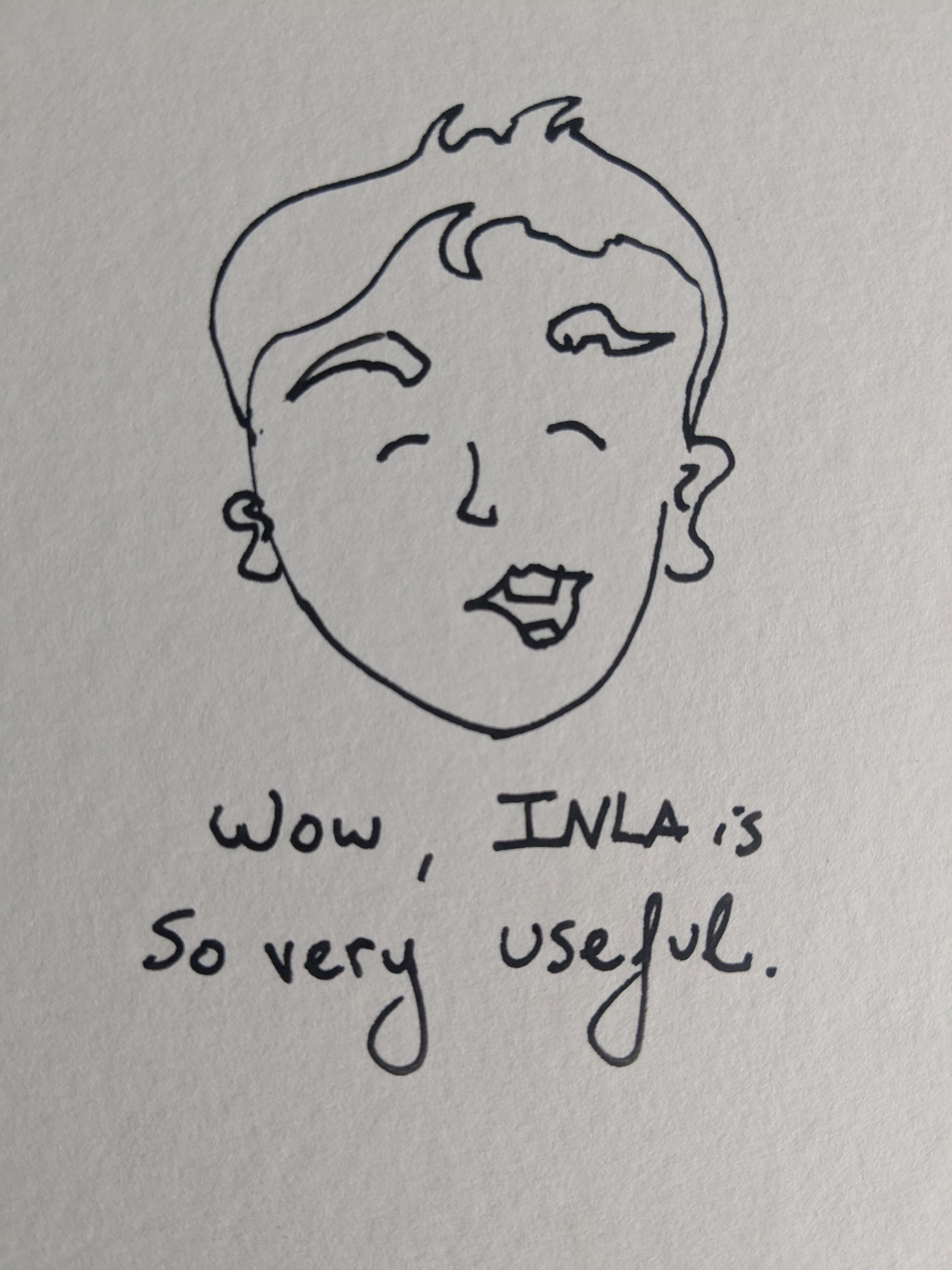1 Introduction
This is a blog post about Log-Gaussian Cox Processes (LGCP), mainly. It is a follow up to the earlier blog post I made about Nonhomogeneous Poisson Process (NHPP) models. In fact, the LGCP is an extension of the NHPP, in that a latent correlation structure is included in the point process model. Specifically, the LGCP uses a Gaussian Random Field to characterize the intensity of the point process. Doing so allows us to take into account spatial or temporal correlation across our region or period of interest. Statistically, this is quite advantageous compared to the NHPP where spatial correlation could only be accounted for via covariates. Not including such correlation structure means that you then assume the covariates included in your model are sufficient to account for spatial fluctuations in the response variable. However, the inclusion of the random field presents mathematical and computational challenges.
Even though the only thing we want to do is include some simple spatial dependence, this quickly becomes a more technical model than the Poisson process. We have to first learn a whole new method of approximation, the Integrated Nested Laplace Approximation (INLA), and a new software framework to be able to efficiently implement the LGCP and INLA. However, the advantage is the INLA method/software is sufficiently general so that we can tackle a whole set of spatial-temporal modelling problems using the same approach. In fact, the INLA approach allows us to (easily???) work with any continuous, discrete, or point-type data that has latent Gaussian structure, and makes possible the combination of likelihoods of different datasets as long as the underlying processes share a set of parameters. Pretty useful stuff.
The general structure of this post is as follows: I will first introduce the LGCP and accompanying theory, but only briefly, as most of the theory is the same as the Poisson Process. Then, I’ll spend some time covering the INLA method–which involves much more theory–and the accompanying R packages INLA and inlabru. I’ll compare these packages for modelling point processes (butterfly observations!) as well as for a continuous measure (air pollution, cough cough). At some point I will end the post and continue later with another about fitting multiple likelihood models in INLA, such as for the purpose of accounting for preferential sampling or including multiple datasets. Perhaps, at the end of this blog, you will be in a similar state as represented in the cartoon below.
